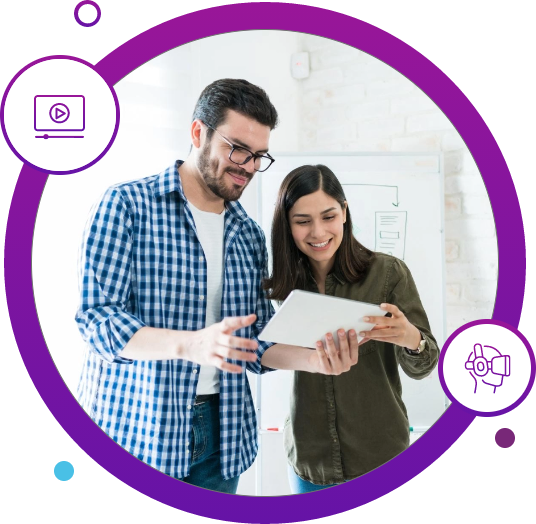Home :: Training Strategies ::
Soft Skills Training
Mastering Soft Skills for Tomorrow's Workplace

The Soft Skills Training market is expected to cross USD 60 Billion by 2031 (Transparency Market Research). Soft Skills Training is becoming a priority for L&D teams across industries. There is a perspective shift among the leaders, who now value hard skills (job proficiency) and soft skills equally.
So, why are L&D leaders investing time and money in Soft Skills Training? Soft Skills aren’t limited to any organization – this means you can apply these skills to any workplace, industry, or in your daily life. These skills include communication and people skills, negotiation skills, time management skills, etc. Crafting effective Soft Skills training is challenging, but our team of experts delivers impactful programs that drive business growth as well as personal and professional development.
Enhancing Soft Skills Training Through Immersive Learning Strategies
Soft Skills Training is often a challenging strategy to design, as learning is open-ended and requires the development of skills rather than simply being learned. EI’s expertise in creating Immersive Learning through key strategies puts the learners in the driver’s seat.
Our immersive learning techniques help you achieve positive learner response, higher engagement, better completion rates, higher recall and retention, improved application of acquired learning, and change in thinking and behavior.
Here are some of the tried and tested strategies that we have used for our customers from varied industry segments:
- Personalization through avatar selection, and options for learners to go through the content, learn through practice, or take an assessment challenge for Banking, Financial Services, and Insurance sectors
- Implementation of scenarios, branched simulations, conversational activities, and rating activities, as well as incorporation of illustrations, graphics, and icons for a visually driven experience for Retail and Consumer Goods sectors
- Reference materials for scenarios, videos, and further learning along with a structured sequence of scenario introduction, conflict situation, decision point, expert advice prior to decision-making, and mentor feedback following the decision submission for Manufacturing and Logistics sectors

Soft Skills Trainings help you develop the following key competencies:
- Leadership Skills
- Problem Solving Skills
- Negotiation Skills
- Self-awareness
- Time Management
- Effective Team Management
- Emotional Intelligence
- Ownership
- Decisiveness
- Communication Skills (Verbal and Non-verbal)
EI’s Soft Skills Training Strategies for Maximizing Training Impact
Here are the key strategies we offer:

Scenario Based Learning
Experience real-life scenarios through immersive design, allowing learners to practice decision-making and problem-solving skills in a safe space without any repercussions.

Blended Learning Solutions
Users learn through experiencing consequences in a dynamic, flipped classroom environment, rather than being informed of such consequences through a series of decision-impacting interventions.

Personalization
Making learning more about ‘you’ than ‘us’ through avatars, personal messaging, relevant characters, workplace stories, etc., helps learners establish their own identity and improve workplace communication.

Gamification
Creating a fun and sticky e-learning experience by transforming the entire learning path into a game, where learners get awards, badges, and scores, to keep up the motivation. This method influences thinking and drives behavioral change in them.

Virtual Reality/Augmented Reality (VR/AR)
Highly immersive and interactive simulations that help enhance communication, collaboration, and problem-solving skills in real life.
- Banking, Financial Services, and Insurance
- Healthcare, Medical Devices, and Pharmaceuticals
- Retail and Consumer Goods
- Government Agencies and Non-Profits
- Manufacturing and Logistics
- Media and Entertainment
- Airlines, Aviation, and Aerospace
- Beverage and Tobacco
- Automotive Sector
- Sales Training
- Compliance Training
- Induction and Onboarding Training
- Leadership Training
- Professional Skills Training
- Product Training
- Soft Skills Training

Ranked #1 in the Top Soft Skills Training Providers in 2021.

Best Competencies and Skill Development
Case Studies

How a University Built Empathy and Connect Among Learners to Create Awareness on Child Abuse Using Scenario Based Learning

How an IT Giant Promoted Organizational Culture Among Employees Across the Globe by Creating an Immersive Learning Experience
